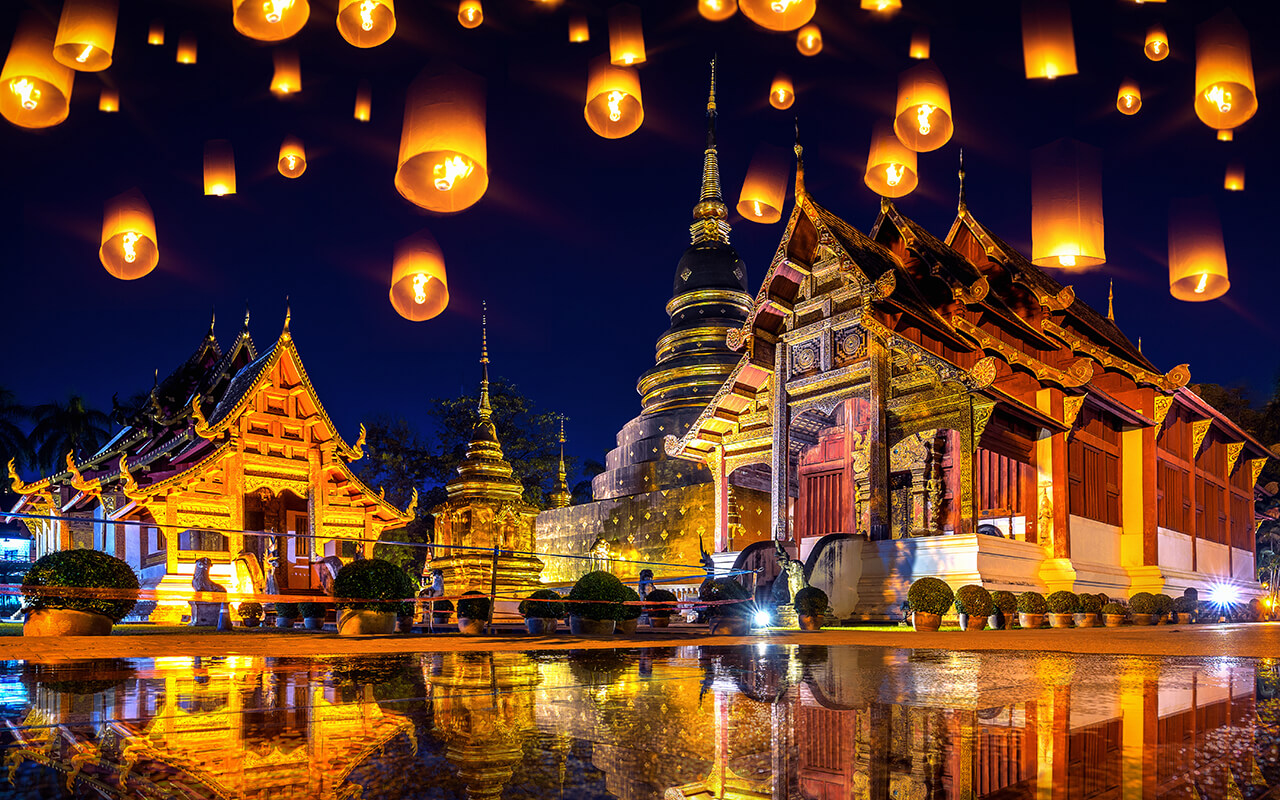
Most travelers make the same mistake. They follow the crowds to the world’s most popular festivals—Oktoberfest, Rio Carnival, and Coachella—while missing out on some of the most extraordinary cultural experiences on the planet. Want something different?
What if you could witness fire-breathing dragons in Spain, a sky full of glowing lanterns in Thailand, or an eerie parade of masked spirits in Bulgaria? These festivals aren’t just events—they’re centuries-old traditions that shape the heart and soul of their cultures. This list has 40 underrated cultural festivals that most tourists don’t know exist—but locals celebrate with pride. Which ones will you add to your bucket list?
3rd Sunday of January – Sinulog Festival in Cebu City, Philippines
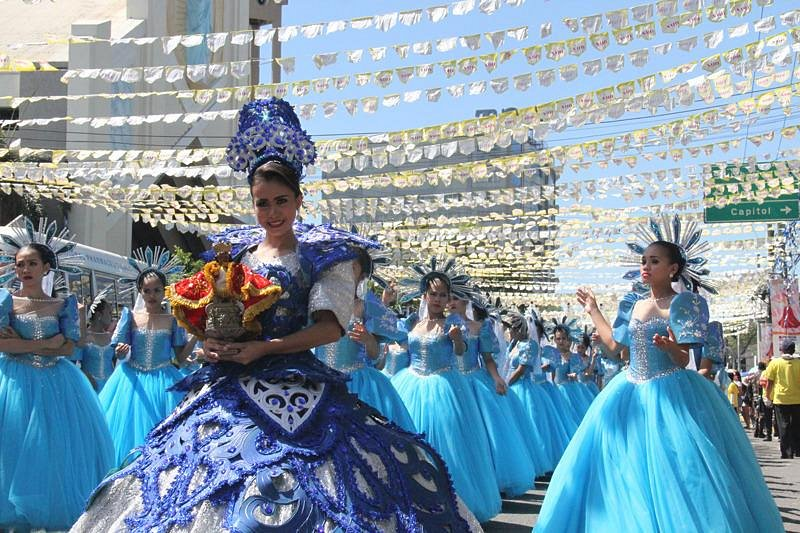
Sinulog is the Philippines’ biggest and most vibrant religious festival, honoring the Santo Niño (Child Jesus). With its lively street parades, traditional dances, and colorful costumes, the festival draws millions of visitors each year. The dance movements mimic the flow of water, symbolizing the country’s pre-colonial roots and its deep Catholic faith. Visitors can join the city-wide revelry, witness grand processions, and experience the electrifying energy of this uniquely Filipino celebration.
February 8 – Thaipusam Festival in Batu Caves, Malaysia
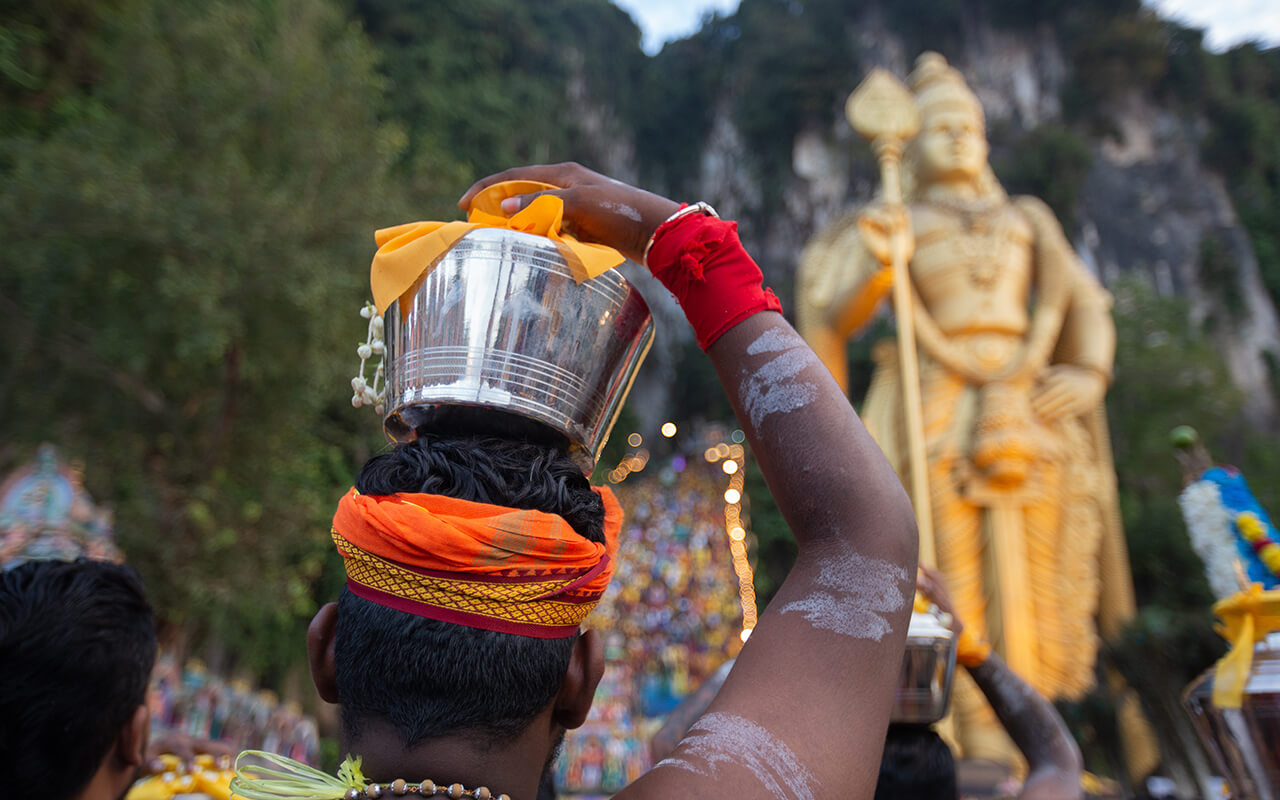
Thaipusam is a Hindu festival dedicated to Lord Murugan, celebrated with intense acts of devotion. Devotees undertake pilgrimages, often carrying kavadis—ornate structures attached to the body through piercings—to seek blessings or fulfill vows. The festival’s name combines the Tamil month “Thai” and the star “Pusam,” under which it is observed. Witnessing Thaipusam offers a profound insight into the depths of religious fervor and cultural traditions. The sight of devotees in trance-like states, accompanied by rhythmic drumming and chanting, creates an atmosphere that’s both intense and captivating.
February 5 – Sapporo Snow Festival in Sapporo, Japan
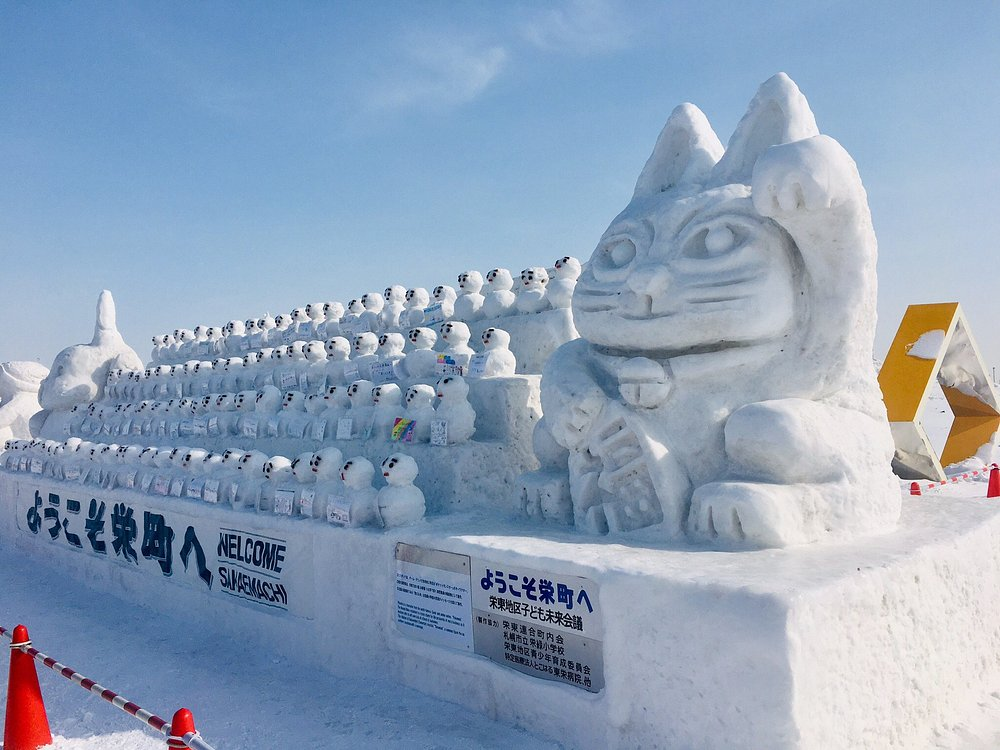
Every February, Sapporo transforms into a winter wonderland during its renowned Snow Festival. The event showcases hundreds of snow and ice sculptures, ranging from intricate artworks to massive structures replicating famous landmarks. The festival began in 1950, initiated by local high school students, and has since grown into an international attraction. Beyond the breathtaking sculptures, visitors can enjoy snow slides, ice bars, and nighttime illuminations. The festival also offers a taste of Hokkaido’s culinary delights, from steaming bowls of ramen to fresh seafood, making it a feast for both the eyes and the palate.
February 21 – Tsagaan Sar Festival Across Mongolia
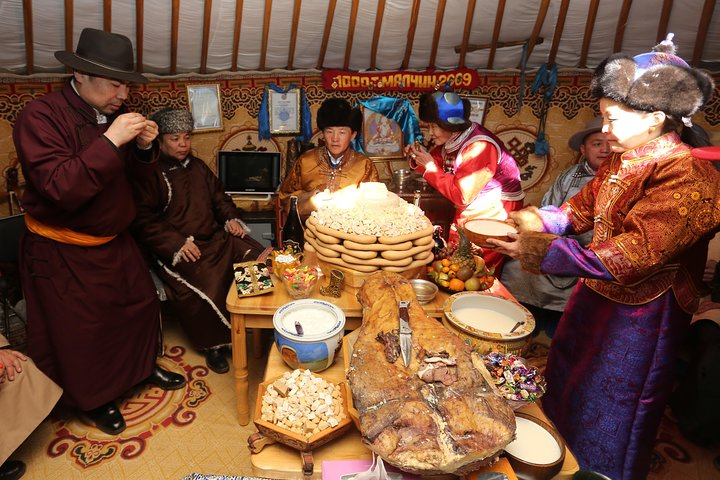
Tsagaan Sar, or “White Moon,” is Mongolia’s Lunar New Year celebration, marking the end of winter and the arrival of spring. Families gather to honor ancestors, exchange gifts, and share traditional meals, including buuz (steamed dumplings) and airag (fermented mare’s milk). The festival reflects Mongolia’s nomadic heritage and deep-rooted customs. Participating in Tsagaan Sar offers an authentic glimpse into Mongolian hospitality and traditions. Visitors can experience ger (yurt) visits, traditional games, and the warmth of a culture that deeply values family and community bonds. (Date varies based on the lunar calendar)
March 2 – Fasnacht Festival in Basel, Switzerland
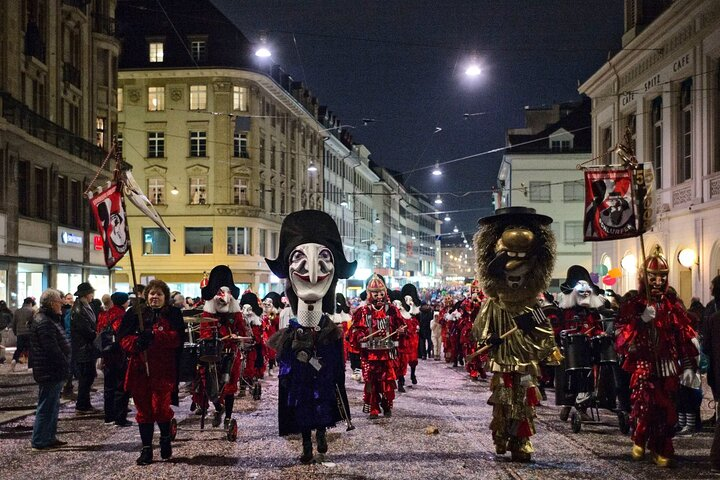
Fasnacht is Switzerland’s version of Carnival, with Basel hosting the country’s most famous celebration. Starting at 4 AM on the Monday after Ash Wednesday with the “Morgestraich” parade, participants don elaborate masks and costumes, parading through the streets to the tunes of piccolos and drums. The festival’s roots date back to the medieval period, serving as a pre-Lenten celebration. Fasnacht offers a surreal experience with its eerie yet enchanting atmosphere. The illuminated lanterns, satirical floats, and continuous music create a dreamlike ambiance, providing a unique insight into Swiss culture and humor.
March 14 – Holi Festival in Kathmandu, Nepal
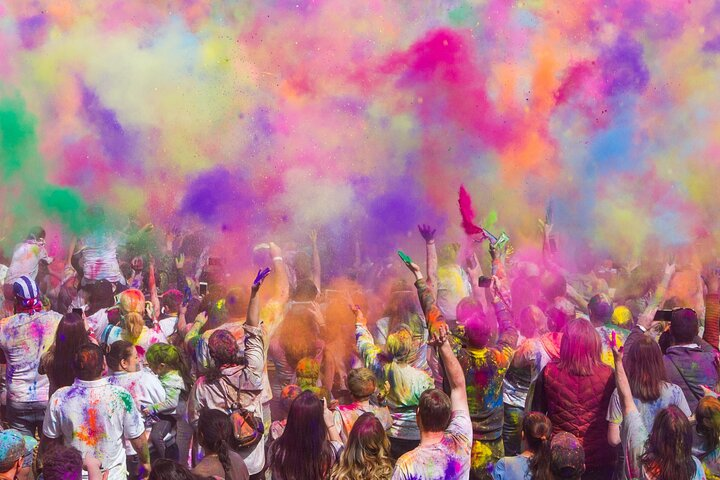
Holi, known as the “Festival of Colors,” is a vibrant Nepali spring celebration observed throughout Nepal. It symbolizes the triumph of good over evil, the arrival of spring, and the end of winter. For many, it’s a joyous occasion to reconnect—playing, laughing, dancing, and mending relationships. Holi takes place on the full moon day (Purnima) of Falgun in the Vikram Samvat Hindu calendar, typically falling between late February and mid-March in the Gregorian calendar. (Date varies based on the lunar calendar)
March 17 – St. Patrick’s Festival in Dublin, Ireland
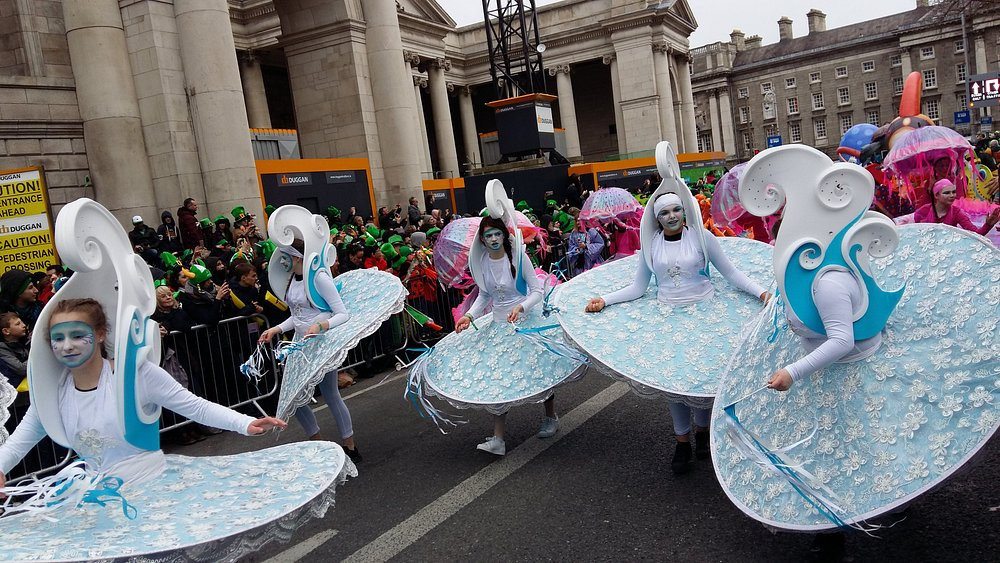
St. Patrick’s Festival is Ireland’s national celebration honoring its patron saint. The multi-day event features parades, traditional music sessions, storytelling, and cultural workshops. While celebrated globally, Dublin’s festivities are unparalleled, offering a deep dive into Irish heritage and contemporary culture. Visitors can enjoy the city’s landmarks illuminated in green, partake in céilí dances, and savor traditional Irish cuisine.
April 13–15 – Songkran Water Festival in Chiang Mai, Thailand
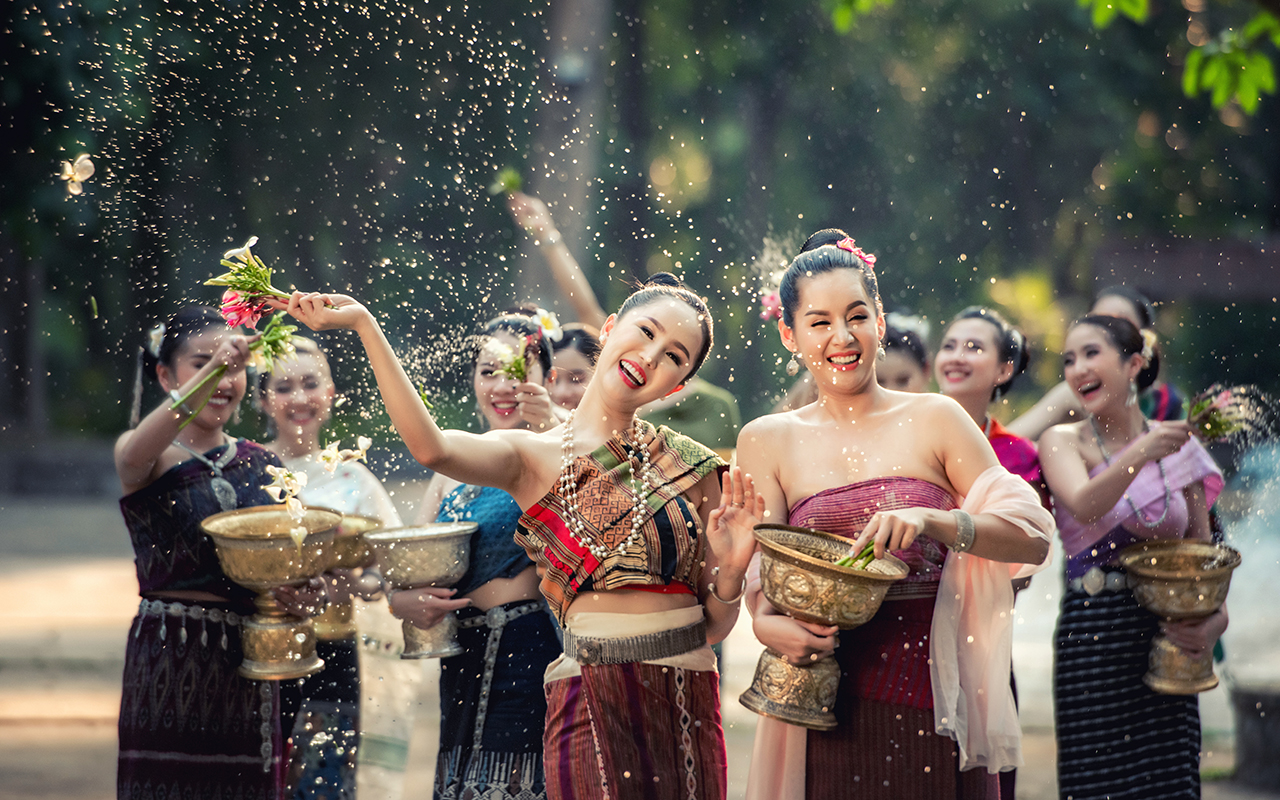
Songkran marks the Thai New Year and is celebrated with nationwide water fights, symbolizing the washing away of past misfortunes. In Chiang Mai, the festival spans several days, featuring parades, traditional rituals, and cultural performances. Beyond the playful water battles, visitors can engage in merit-making activities at temples, witness the procession of the revered Phra Buddha Sihing statue, and experience Lanna cultural traditions unique to Northern Thailand.
April 27 – King’s Day Festival in Amsterdam, Netherlands
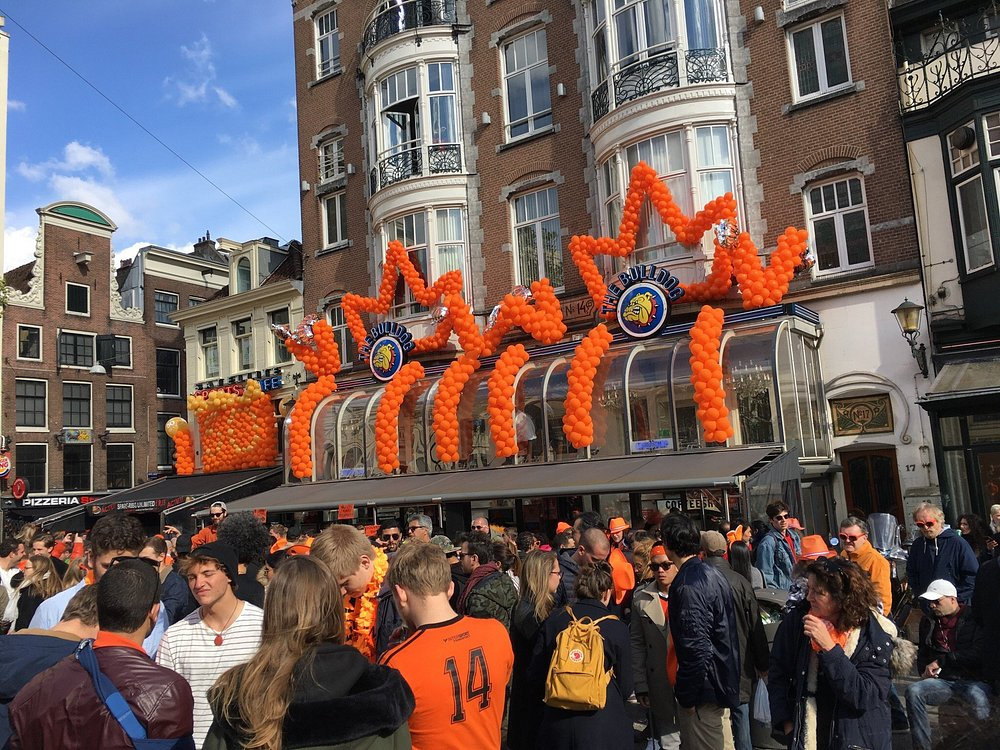
King’s Day, or “Koningsdag,” is a nationwide Dutch celebration of the monarch’s birthday. Amsterdam becomes a sea of orange, the national color, with street markets, boat parties along the canals, and open-air concerts. The city’s vibrant atmosphere is infectious, offering visitors a chance to partake in the jovial festivities, sample Dutch treats, and explore the capital’s rich cultural offerings amidst the celebrations.
May 15 – Pahiyas Festival in Lucban, Philippines
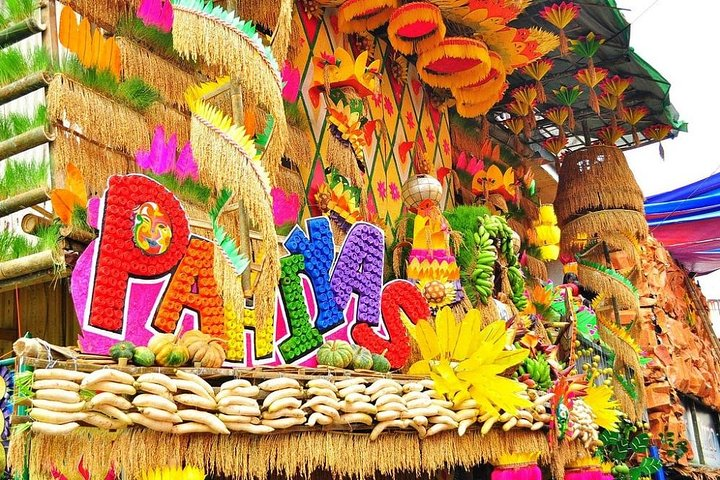
Pahiyas is a vibrant harvest festival held in Lucban to honor San Isidro Labrador, the patron saint of farmers. Residents adorn their homes with colorful decorations made from rice wafers, fruits, and vegetables, creating a visual feast. The festival includes parades, traditional music, and local delicacies. Visitors can immerse themselves in Filipino culture, witness the community’s creativity, and enjoy the festive atmosphere.
June 21 – Inti Raymi Festival in Cusco, Peru
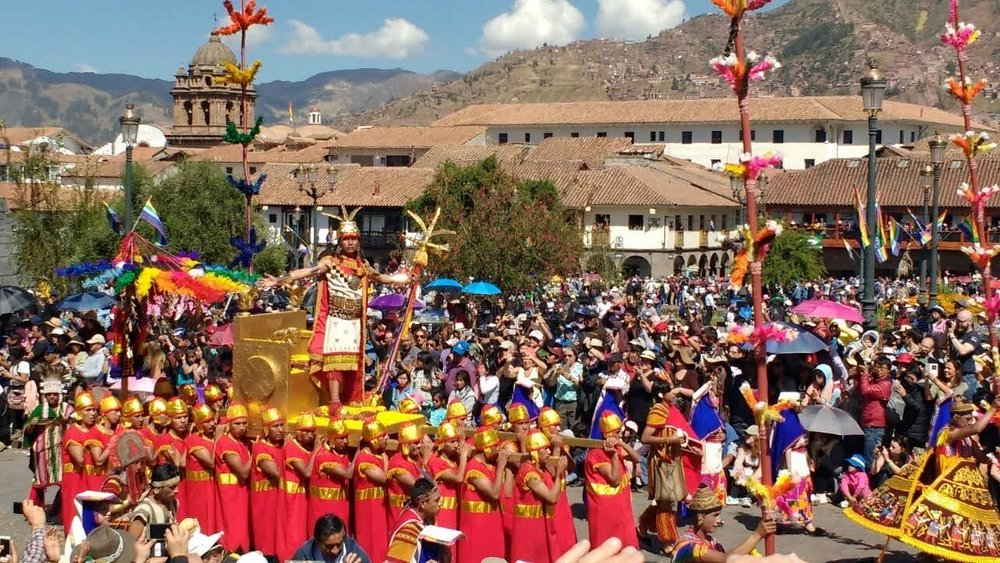
Inti Raymi, or the “Festival of the Sun,” is an ancient Incan celebration honoring the sun god Inti. Held during the winter solstice, the festival features elaborate reenactments of Incan ceremonies, traditional music, and dance performances. Visitors can experience the rich history of the Incan Empire, witness vibrant processions, and explore the historic city of Cusco during this cultural event.
July 11–15 – Naadam Festival in Ulaanbaatar, Mongolia
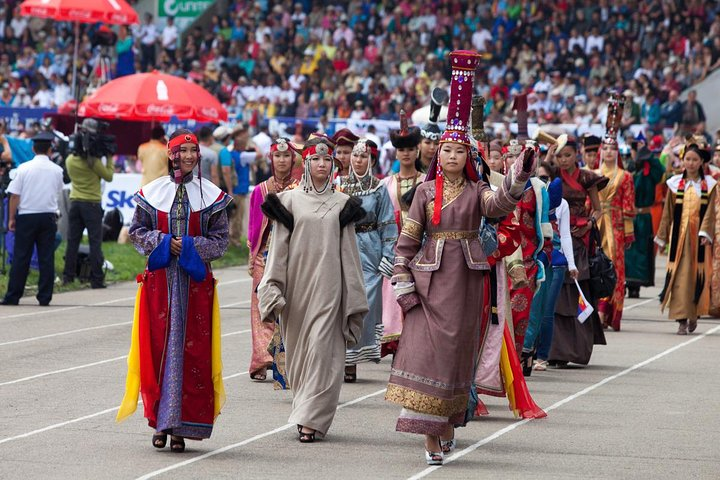
Naadam is Mongolia’s national festival, showcasing the “Three Manly Games” of wrestling, horse racing, and archery. The event includes elaborate opening ceremonies, traditional music, and cultural performances. Visitors can witness the athletic prowess of participants, explore Mongolian traditions, and enjoy the festive atmosphere in the capital city.
July 14 – Fête de la Fédération (Bastille Day) in Paris, France
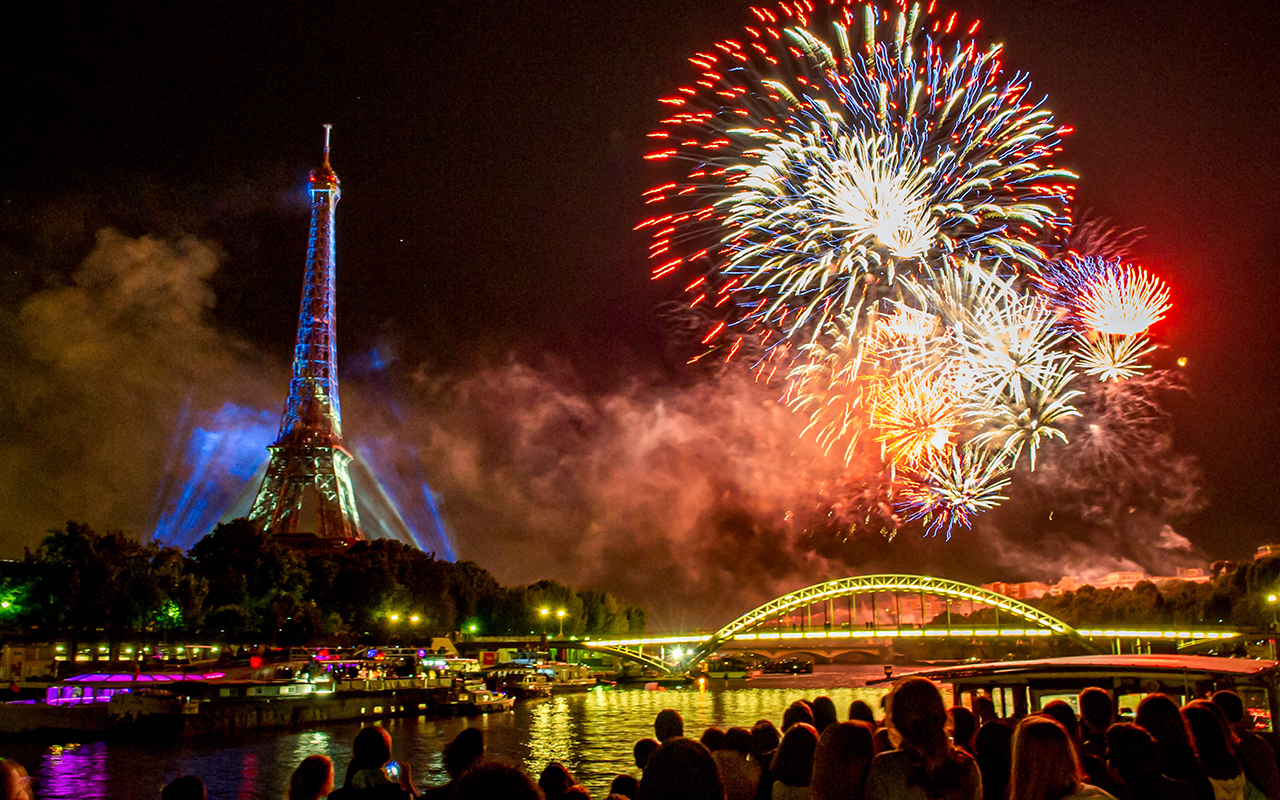
Also known as Bastille Day, this national holiday commemorates the French Revolution’s pivotal event. Paris hosts military parades along the Champs-Élysées, fireworks over the Eiffel Tower, and various cultural events. Visitors can experience French patriotism, enjoy the city’s landmarks illuminated at night, and participate in festive activities throughout the capital.
Last Tuesday of January – Viking Fire Festival in Lerwick, Scotland
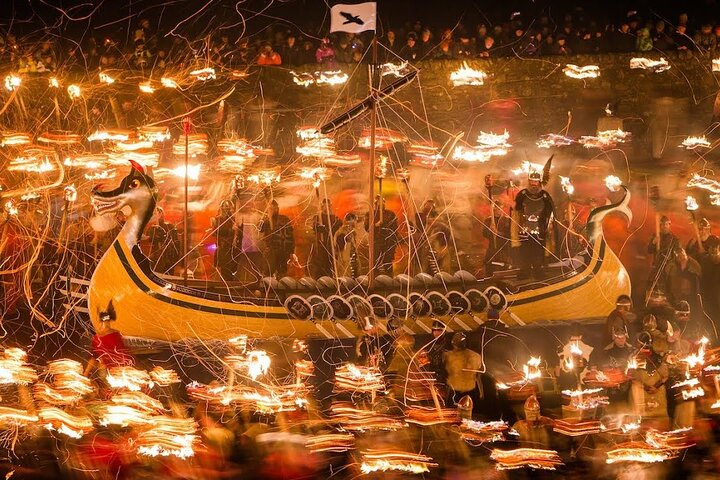
Step into the fiery spirit of the Vikings at Lerwick’s legendary Up Helly Aa, the ultimate Viking fire festival. Held annually on the last Tuesday of January, this spectacular event honors Shetland’s Norse heritage with torch-lit processions, traditional Viking costumes, and the dramatic burning of a replica longship. Thousands of participants march through the streets, culminating in an unforgettable bonfire. Visitors can witness the breathtaking display, enjoy traditional music, and immerse themselves in Shetland’s rich seafaring history.
August 16 – Obon Festival in Kyoto, Japan
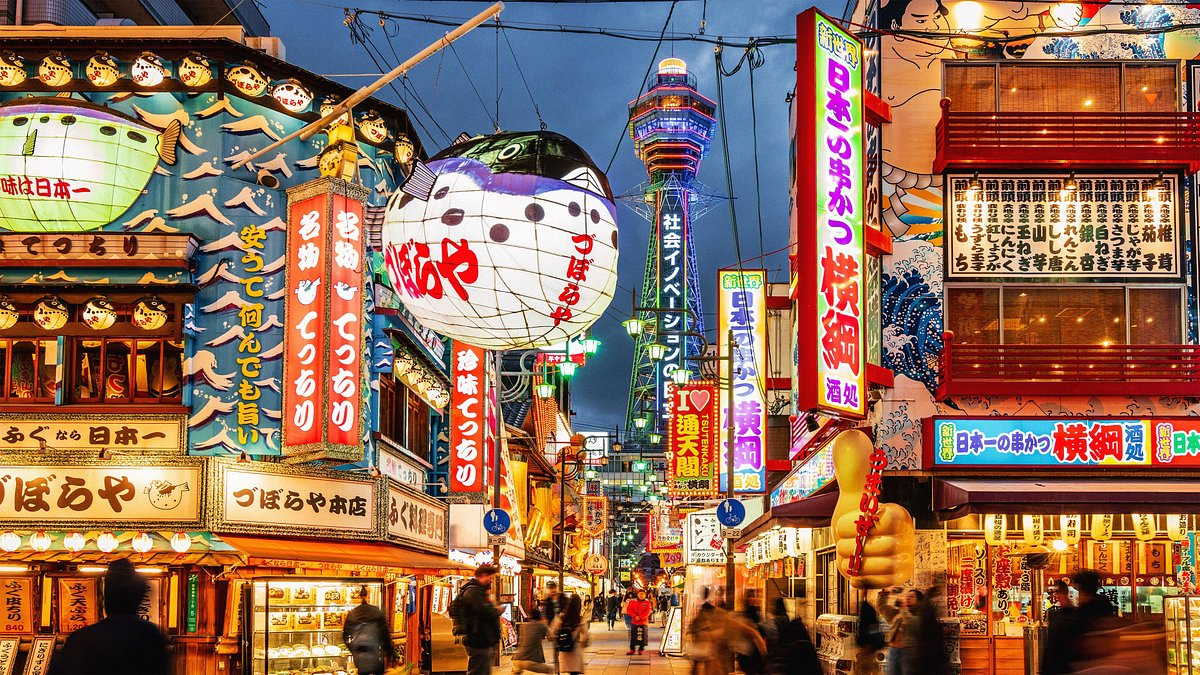
Obon is a Japanese Buddhist festival honoring deceased ancestors. Kyoto’s celebration includes traditional dances, lantern lighting, and memorial services. Visitors can witness the graceful Bon Odori dances, participate in lantern-floating ceremonies, and experience the serene atmosphere of Kyoto’s temples during this reflective festival. (Date varies based on the lunar calendar)
September 16 – Grape Harvest Festival in Mendoza, Argentina
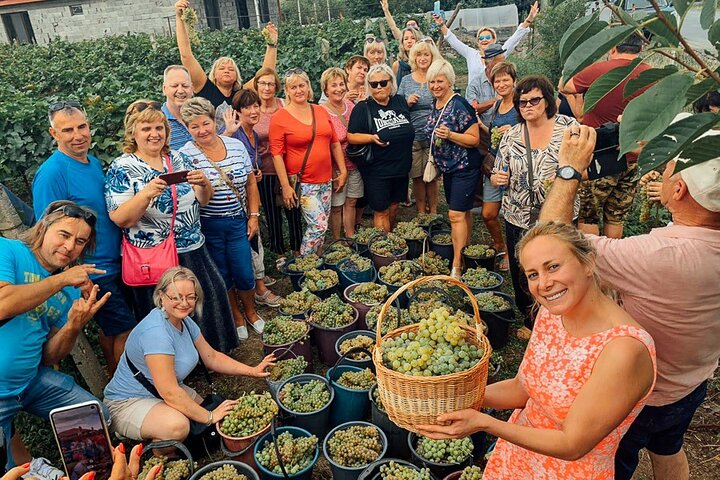
The Grape Harvest Festival, or “Fiesta Nacional de la Vendimia,” celebrates the region’s wine production with parades, music, and wine tastings. Visitors can explore vineyards, enjoy local wines, and participate in cultural events showcasing Argentina’s viticulture heritage. (Fiesta Nacional de la Vendimia, held in March but regional harvest events occur in September)
October 31 – Samhain Festival in Dublin, Ireland
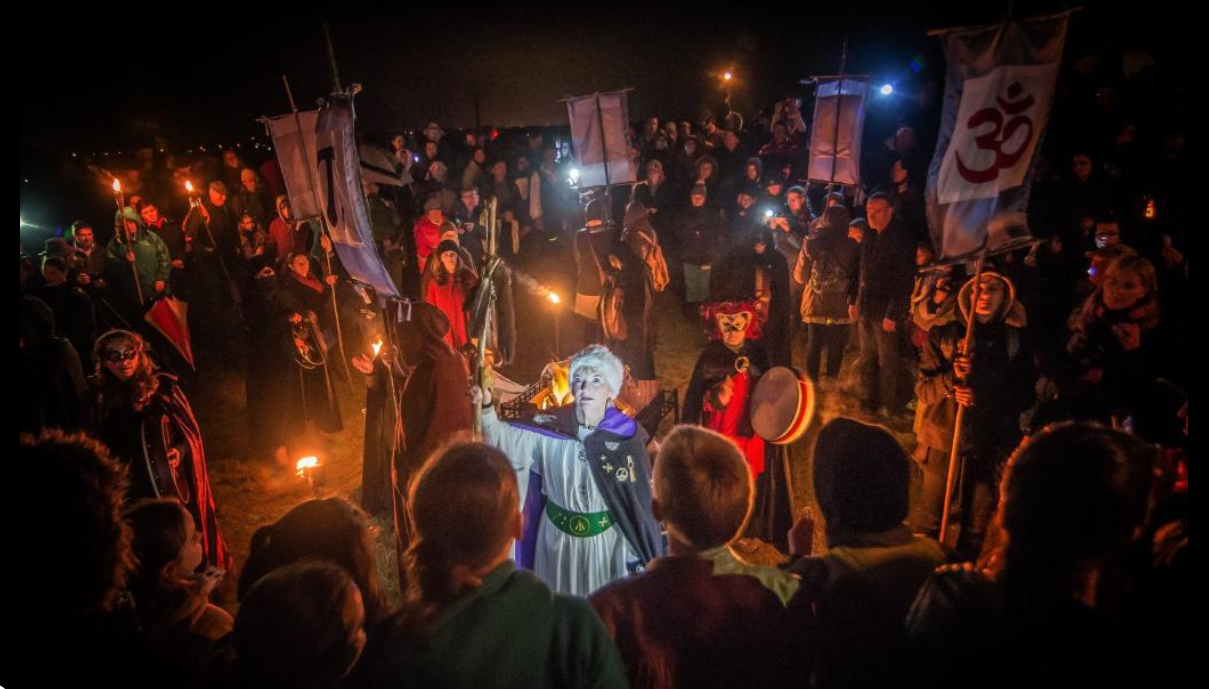
Samhain is an ancient Celtic festival marking the end of the harvest season and the beginning of winter. Dublin’s celebration includes traditional music, storytelling, and reenactments of ancient rituals. Visitors can delve into Ireland’s rich folklore, enjoy the festive atmosphere, and learn about the origins of Halloween during this cultural event.
November 1–2 – Día de los Muertos in Oaxaca, Mexico
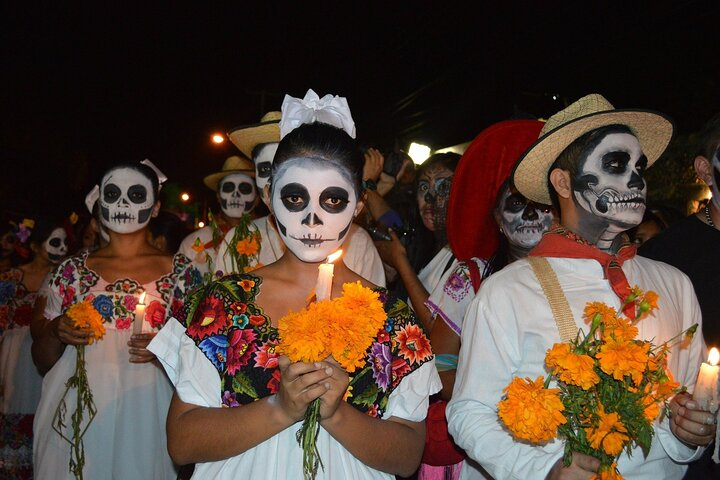
Día de los Muertos, or “Day of the Dead,” is a Mexican festival honoring deceased loved ones. Oaxaca’s celebration features elaborate altars, traditional music, and vibrant parades. Visitors can experience the rich cultural traditions, sample traditional foods, and witness the community’s heartfelt tributes during this colorful festival.
First Weekend of August – Tønsberg Medieval Festival in Tønsberg, Norway
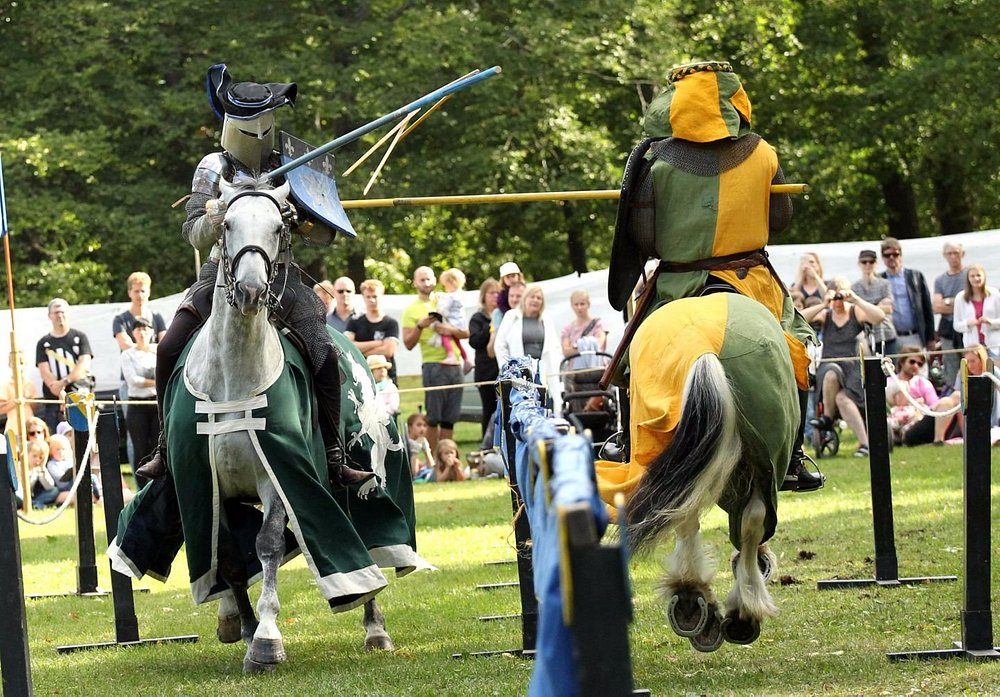
Step back in time at the Tønsberg Medieval Festival, a celebration of medieval history and culture set in Norway’s oldest town. Held every year on the first weekend of August, this vibrant festival brings the Middle Ages to life with jousting tournaments, knightly battles, historical reenactments, and medieval markets. Visitors can enjoy traditional music, craft stalls, and feasts while interacting with characters dressed in authentic period attire. A unique opportunity to experience history in an immersive and fun way, perfect for history buffs and families alike.
December 26 – Junkanoo Festival in Nassau, Bahamas
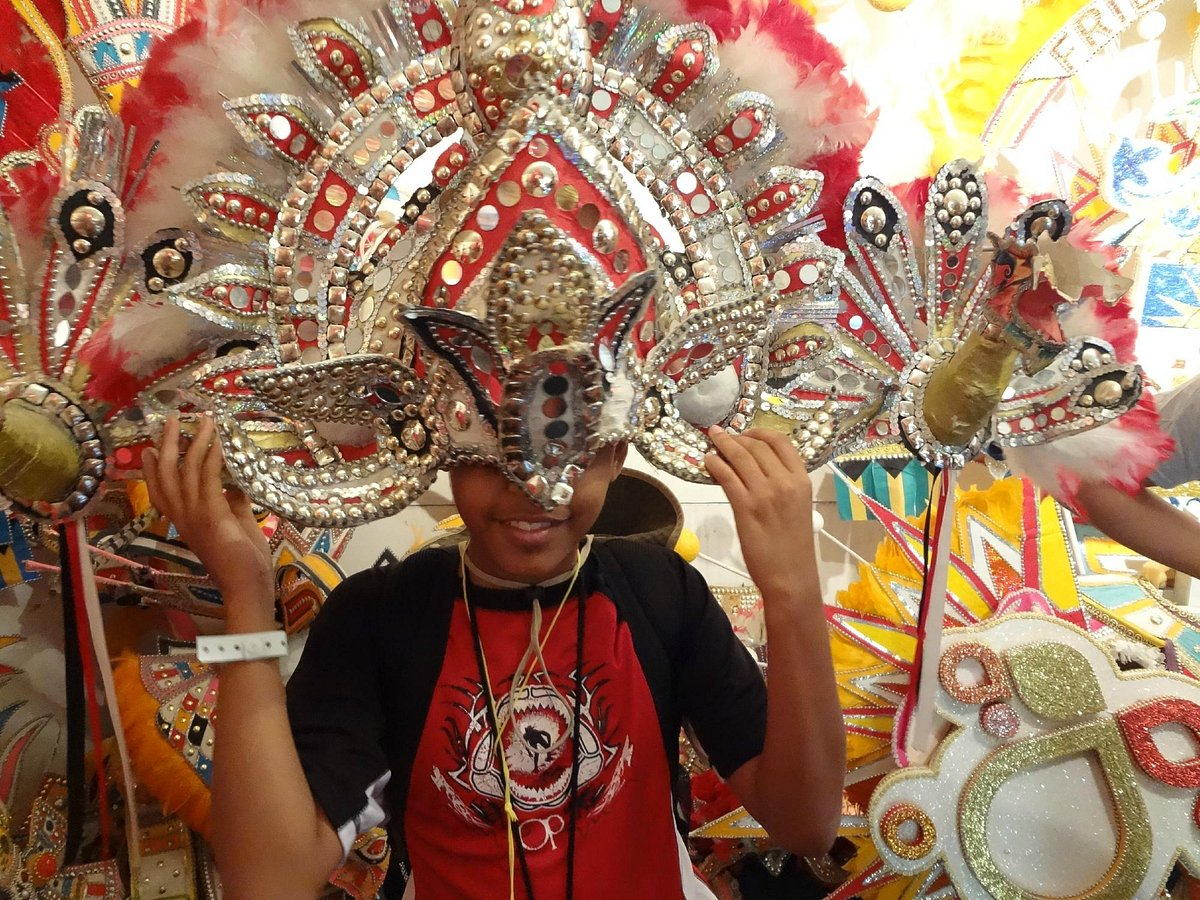
Junkanoo is the Caribbean’s most electrifying street parade, held every Boxing Day and New Year’s Day in the Bahamas. The festival’s origins trace back to the 17th century, when enslaved Africans celebrated their brief holiday with music and dance. Today, Nassau’s streets explode with elaborate costumes, rhythmic drumming, and exuberant dancers moving to the hypnotic sounds of goombay beats. Visitors can join the revelry, experience Bahamian culture at its most vibrant, and witness one of the liveliest and most colorful celebrations in the world. (Also held on January 1)
January 15 – Magh Bihu Festival in Assam, India
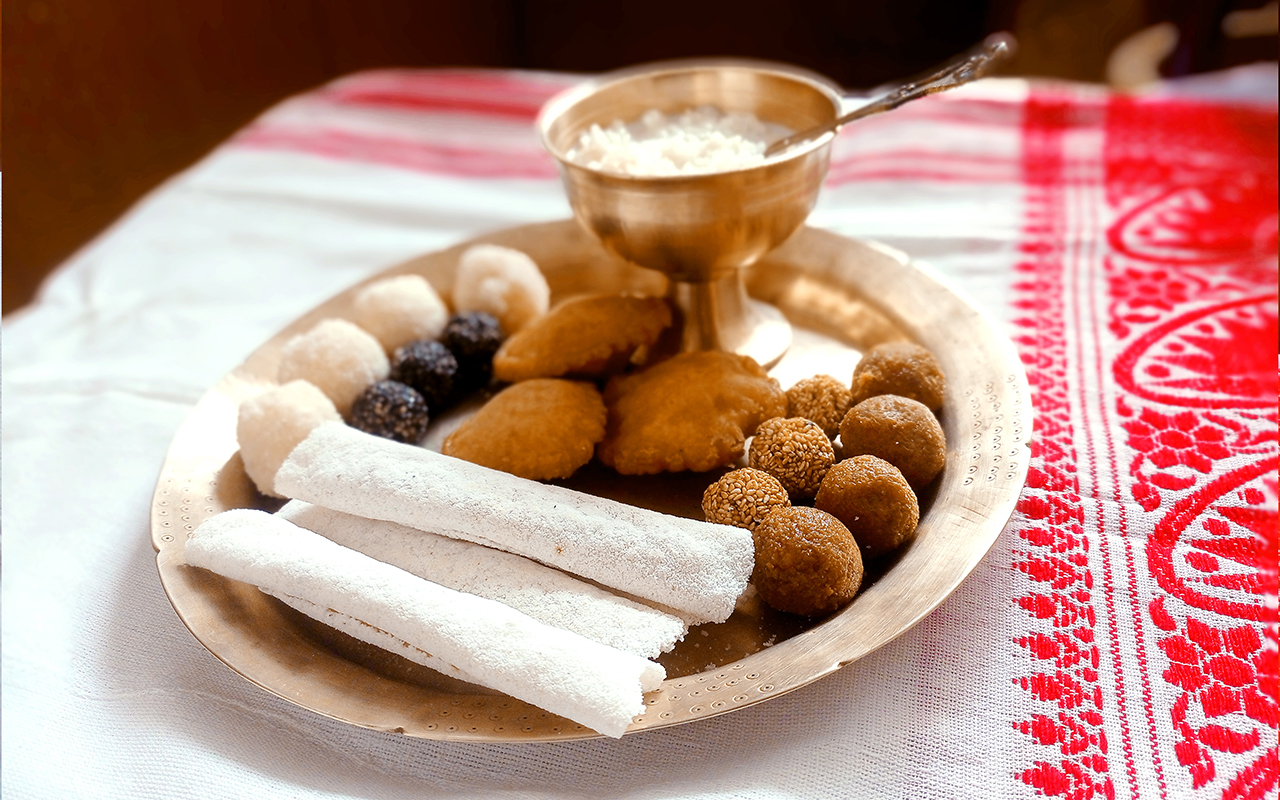
Magh Bihu is a harvest festival deeply embedded in Assamese culture, marking the end of the harvesting season with grand feasts and bonfires. The night before, locals burn makeshift huts called “Meji” as part of a ritual symbolizing the farewell to winter. Traditional sports like buffalo fighting, along with feasts featuring rice cakes and fresh harvest produce, bring communities together. Visitors can experience the rich agricultural traditions of Assam, taste authentic northeastern cuisine, and witness the community spirit that defines this festival.
February 3 – Setsubun Festival in Kyoto, Japan
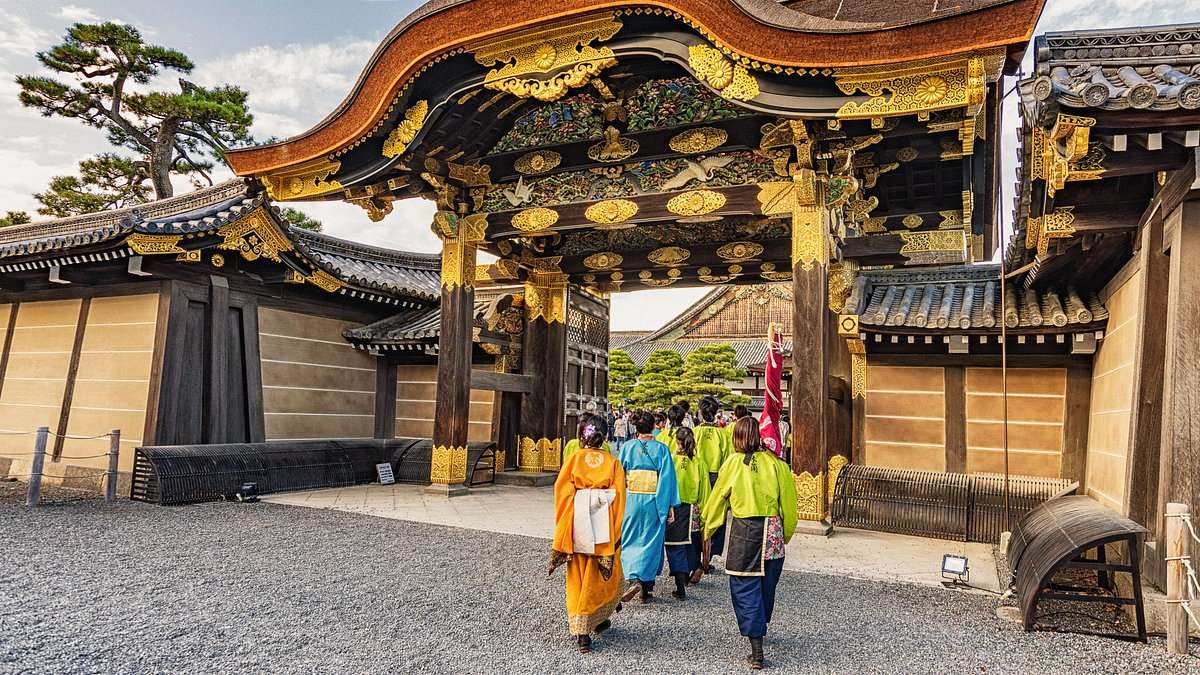
Setsubun, known as the “Bean-Throwing Festival,” is an age-old Japanese ritual meant to drive away evil spirits and welcome good fortune. At Kyoto’s temples, people throw roasted soybeans while chanting “Oni wa soto, fuku wa uchi” (“Out with the demons, in with the good luck”). The festival is a mix of spiritual significance and playful traditions, with families participating in bean-throwing ceremonies and elaborate performances featuring actors dressed as demons. Visitors can join in this lively custom, explore Kyoto’s historic temples, and witness a centuries-old Japanese tradition.
March 8 – Las Fallas in Valencia, Spain
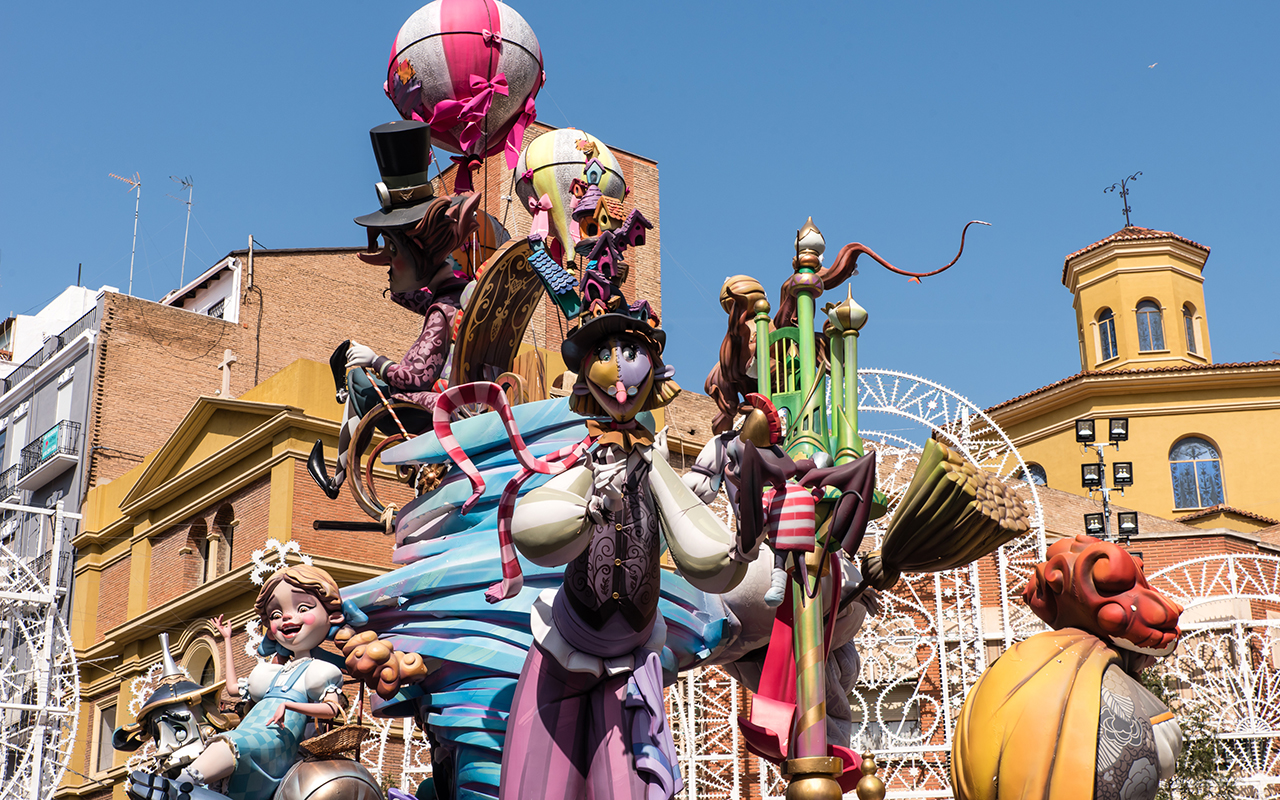
Las Fallas is a fiery Spanish festival celebrating the arrival of spring with massive, satirical papier-mâché sculptures that are set ablaze on the final night. The event dates back to medieval times when carpenters would burn wooden structures at the end of winter. Today, it has evolved into a citywide spectacle featuring fireworks, parades, and vibrant street parties. Visitors can explore Valencia’s stunning fallas creations, enjoy the adrenaline rush of the final burning ceremony, and witness one of Europe’s most breathtaking fire festivals.
March 29 – Nyepi (Balinese New Year) in Bali, Indonesia
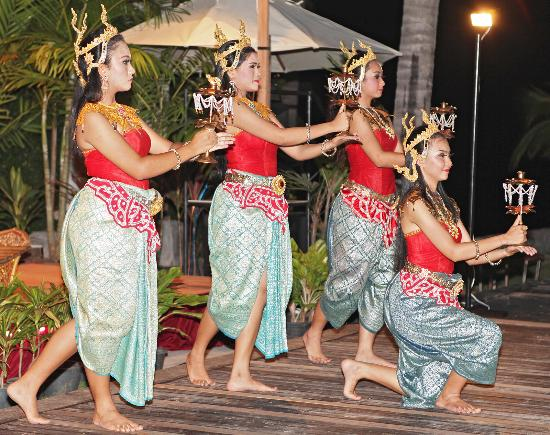
Nyepi, or the Balinese Day of Silence, is unlike any other New Year’s celebration. Instead of fireworks and parties, the entire island of Bali comes to a complete standstill. No one works, no one speaks, and even flights are halted. The purpose is to cleanse the island of negative energy through meditation and silence. Leading up to Nyepi, spectacular Ogoh-Ogoh parades feature giant demonic effigies, which are later burned to banish evil spirits. Visitors can experience a rare moment of complete tranquility, followed by a fresh start to the new year in one of the most spiritual places on Earth. (Date varies based on the lunar calendar)
April 30 – Walpurgis Night in Harz Mountains, Germany
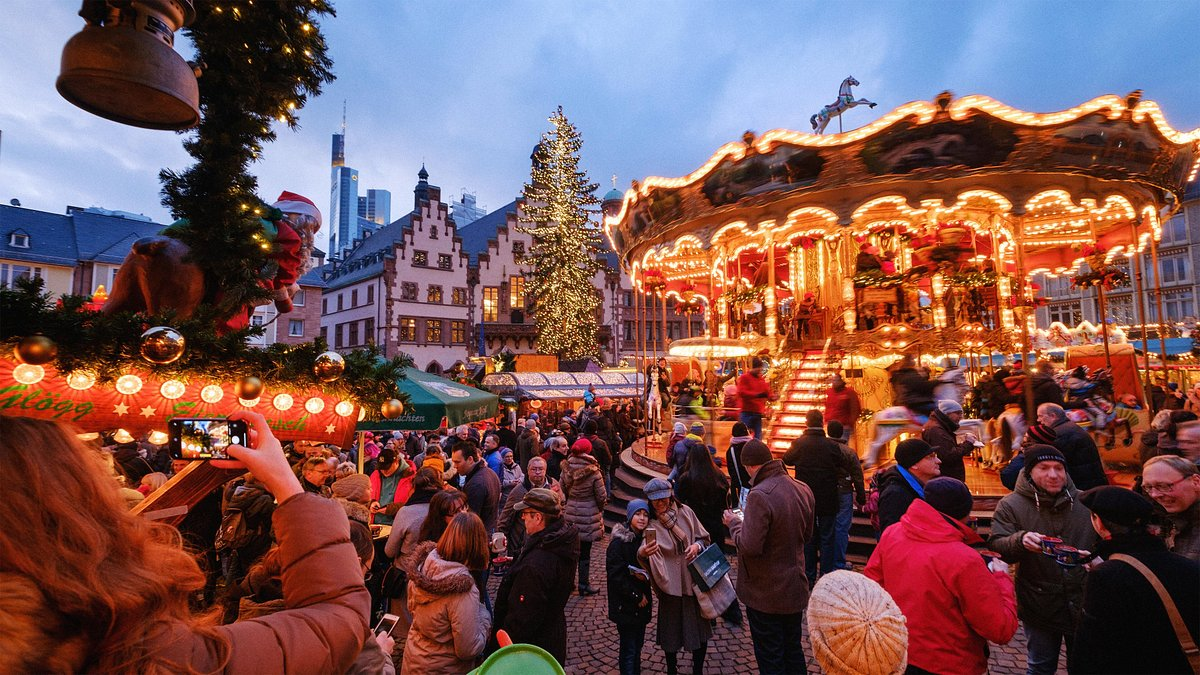
Walpurgis Night is an eerie and mystical celebration rooted in ancient European folklore, where witches were believed to gather on mountaintops. Today, the Harz Mountains host theatrical reenactments, bonfires, and masquerade balls to celebrate the arrival of spring. Costumed performers, medieval markets, and torch-lit processions create a fairytale-like atmosphere. Visitors can immerse themselves in this otherworldly celebration, explore Germany’s folklore-rich regions, and witness the blending of ancient pagan and modern festival traditions. (Held during Corpus Christi, date varies annually)
May 20 – Patum de Berga in Berga, Spain
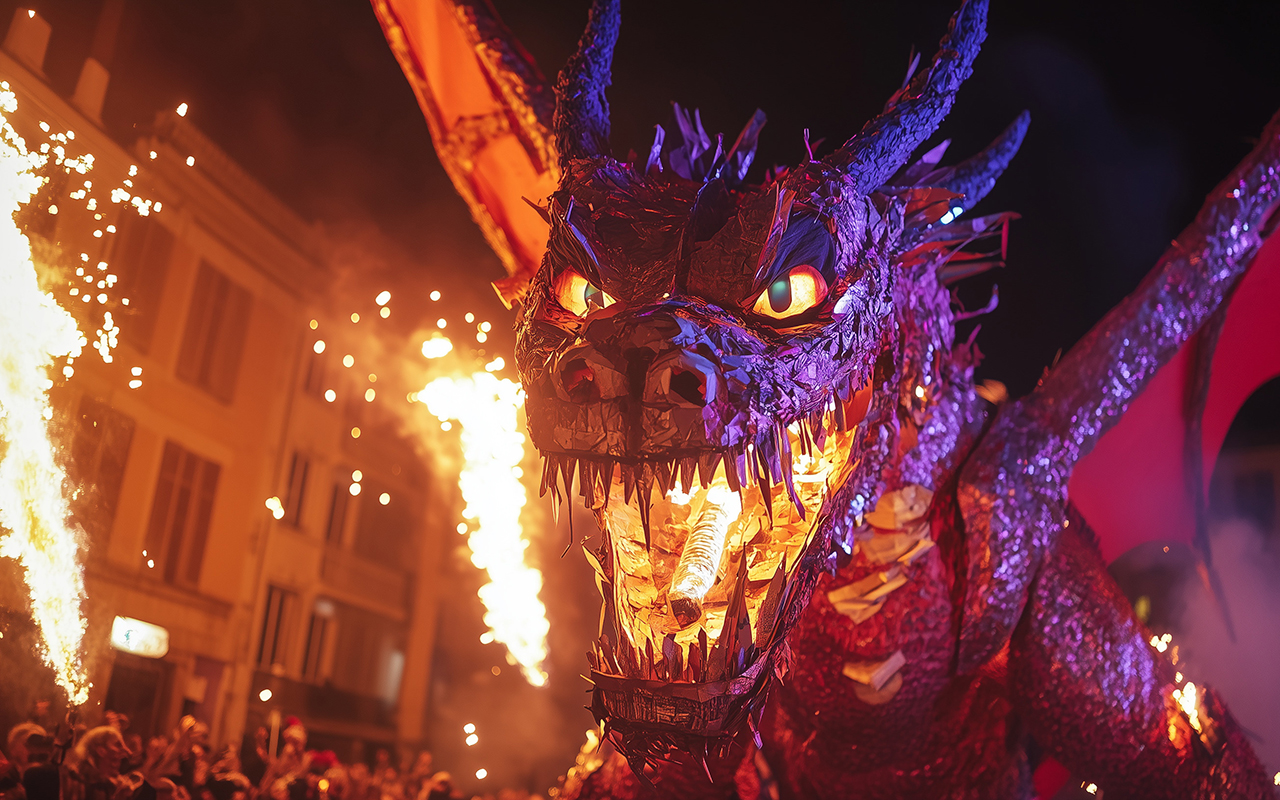
Patum de Berga is an adrenaline-pumping festival featuring fire-breathing dragons, stilt walkers, and pyrotechnic performances. This centuries-old Catalan festival, recognized as UNESCO Intangible Cultural Heritage, originated as a medieval Corpus Christi celebration. The streets of Berga come alive with fiery spectacles, intense drumming, and devilish characters weaving through the crowds. Visitors can experience a high-energy, immersive festival unlike any other, where fire and folklore collide in an explosion of tradition and spectacle.
June 23 – Jāņi (Midsummer Festival) in Riga, Latvia
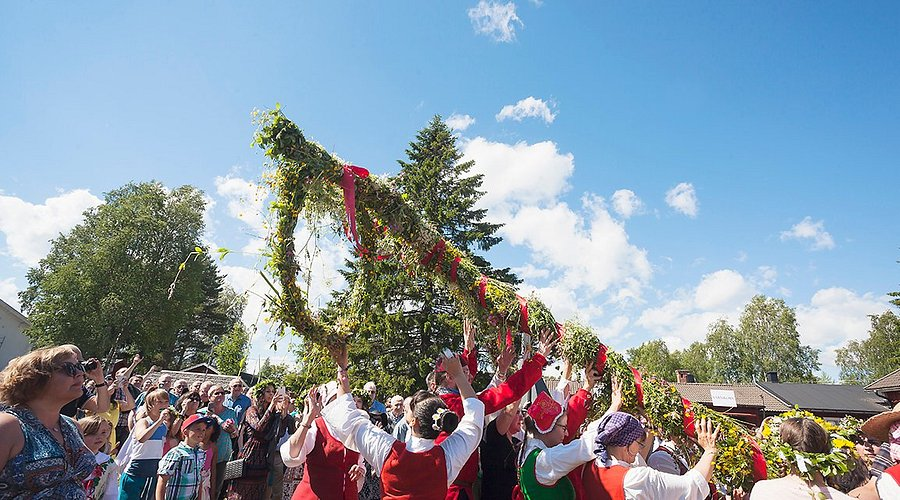
Jāņi is Latvia’s most important festival, marking the summer solstice with bonfires, singing, and wildflower wreaths. It’s a night of magic and mysticism, where traditions include jumping over bonfires for luck and searching for the mythical “fern flower.” The festival dates back to ancient Baltic pagan rituals celebrating nature and fertility. Visitors can enjoy traditional Latvian songs, drink homemade beer, and dance the night away under the endless daylight of the summer solstice.
April (Dates Vary) – Yanbu Flower Festival in Yanbu, Saudi Arabia
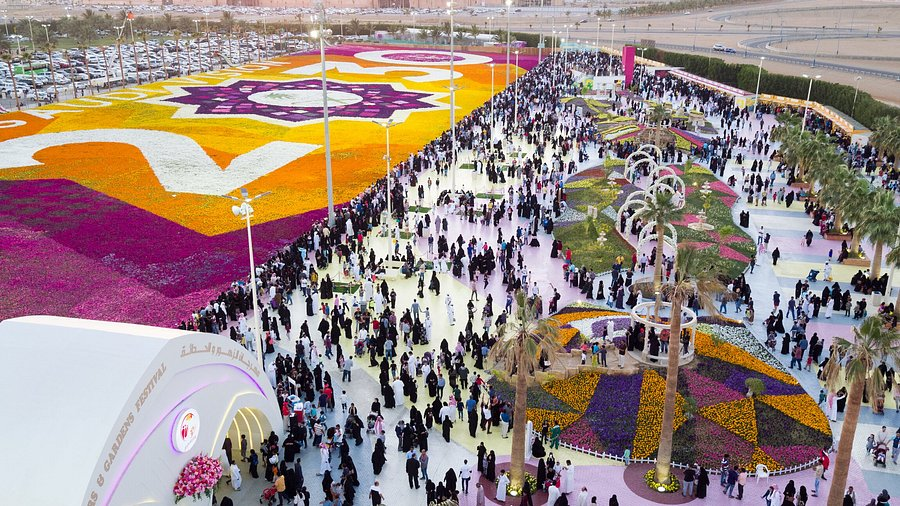
The Yanbu Flower Festival is one of the most vibrant events in Saudi Arabia, celebrating the beauty of nature and the cultural significance of flowers in the region. Over the course of several days, the city comes alive with colorful floral displays, cultural performances, and artistic exhibitions. Visitors can explore stunning garden designs, enjoy traditional music and dance performances, and immerse themselves in the local arts and crafts scene. The festival offers a unique opportunity to experience the natural beauty of Yanbu while connecting with the rich heritage of the area. (Date varies based on the local schedule)
August 24 – La Tomatina in Buñol, Spain
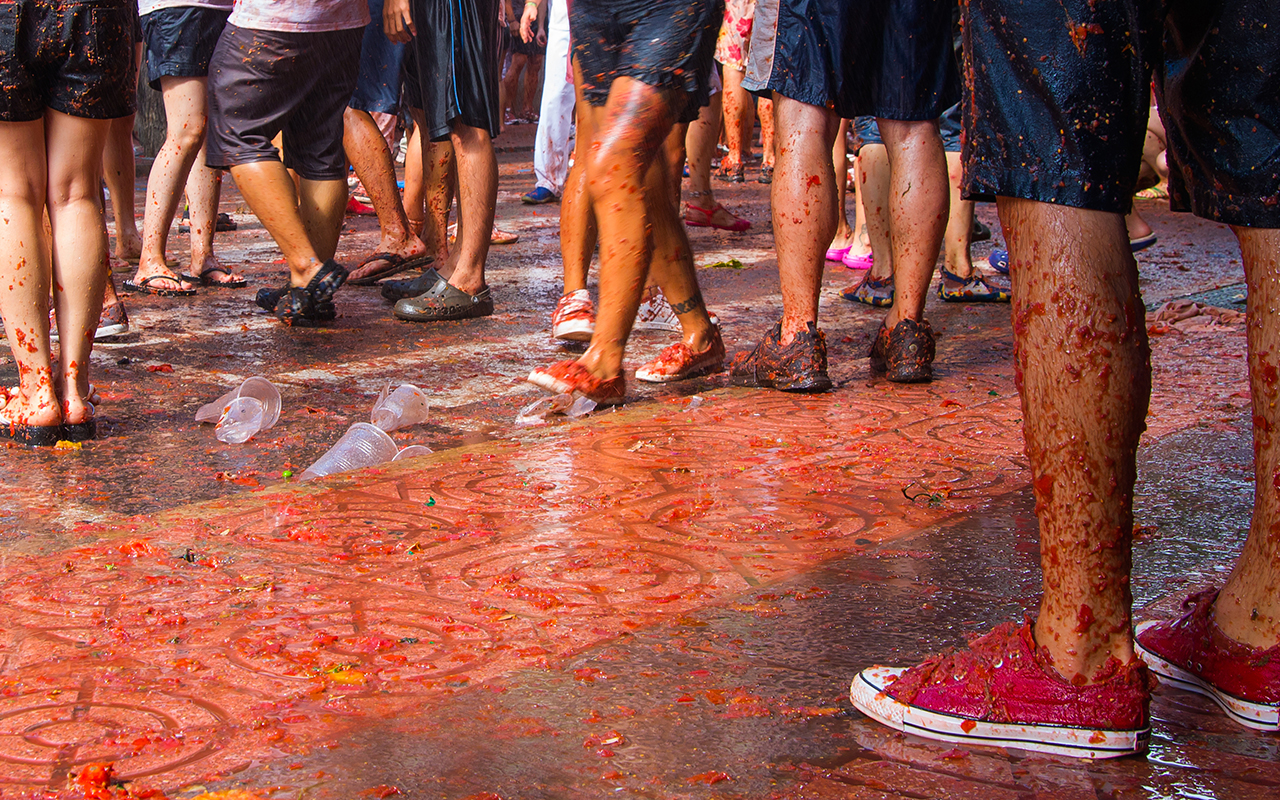
La Tomatina is the world’s biggest food fight, where tens of thousands of participants hurl overripe tomatoes at each other in a wild, hour-long frenzy. What began as a spontaneous brawl in 1945 has grown into a globally famous event. The streets of Buñol are transformed into a sea of red, creating a chaotic yet thrilling experience. Visitors can unleash their playful side, join in the world’s messiest festival, and enjoy Spanish hospitality in this quirky celebration. (Last Wednesday of August)
September 9 – Onam Festival in Kerala, India

Onam is Kerala’s grandest festival, marking the mythical homecoming of King Mahabali. The ten-day celebration includes floral carpet competitions, extravagant feasts, boat races, and elaborate dance performances. Onam highlights Kerala’s cultural richness, with traditional art forms like Kathakali and Pulikali (tiger dance). Visitors can indulge in the iconic Onam Sadya (a multi-course vegetarian feast), witness the iconic snake boat races, and immerse themselves in the warm hospitality of Kerala. (Date varies based on the lunar calendar)
October 5 – Albuquerque International Balloon Fiesta in Albuquerque, USA
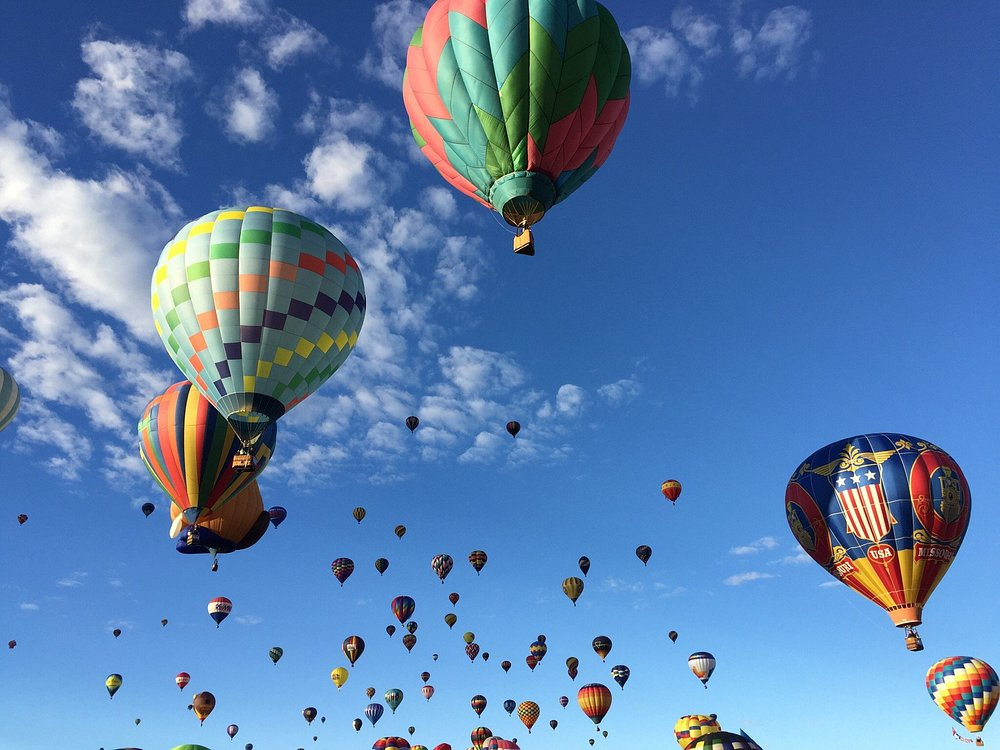
The Albuquerque International Balloon Fiesta is the world’s largest hot air balloon festival, drawing over 800,000 visitors annually. Every morning, hundreds of colorful balloons ascend into the crisp autumn sky, creating a breathtaking spectacle. The festival, which began in 1972 with just 13 balloons, has grown into a globally renowned event featuring balloon rodeos, night glows, and mass ascensions. Visitors can take part in sunrise launches, witness balloons shaped like cartoon characters, and even ride in a balloon for a bird’s-eye view of New Mexico’s stunning landscapes. (Dates vary annually)
October 22 – Yi Peng Lantern Festival in Chiang Mai, Thailand
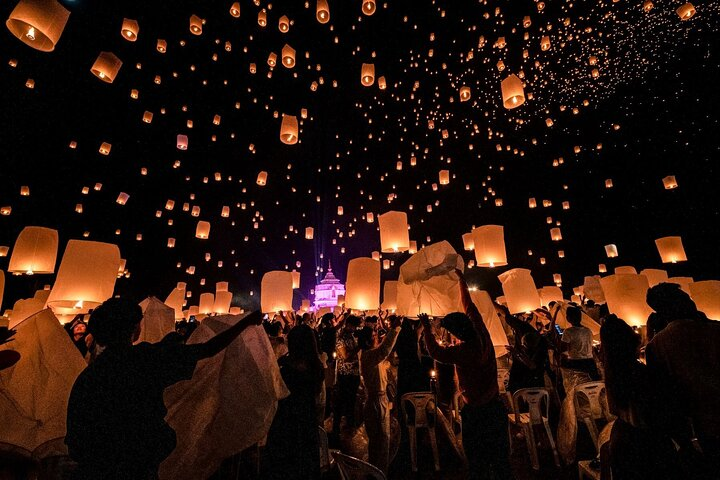
Yi Peng, the famous Thai lantern festival, transforms Chiang Mai’s night sky into a mesmerizing display of floating lights. Rooted in ancient Lanna traditions, the festival is a time for reflection, merit-making, and setting intentions for the year ahead. Thousands of lanterns are released into the sky, symbolizing the letting go of misfortunes and welcoming good luck. Visitors can experience the magic firsthand, participate in traditional ceremonies, and capture breathtaking photos of one of Thailand’s most iconic celebrations. (Date varies based on the lunar calendar)
November 11 – Pushkar Camel Fair in Pushkar, India
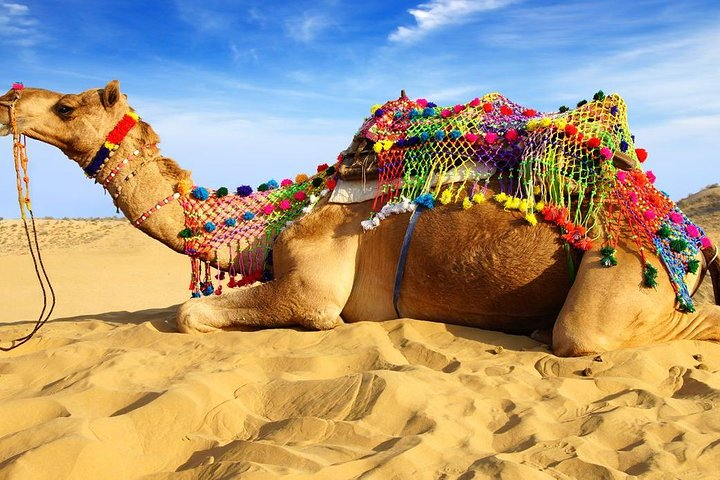
The Pushkar Camel Fair is one of India’s most unique cultural spectacles, blending ancient trade traditions with vibrant festivities. Originally a marketplace for camel traders, the fair has evolved into a week-long event featuring camel races, folk performances, and even a “Longest Mustache” competition. Thousands of decorated camels parade through the golden dunes of Rajasthan, while travelers can enjoy local delicacies, ride camels, and witness the spiritual side of Pushkar by attending sunrise prayers at the sacred lake. (Dates vary annually)
December 1–10 – Hornbill Festival in Kisama, Nagaland, India
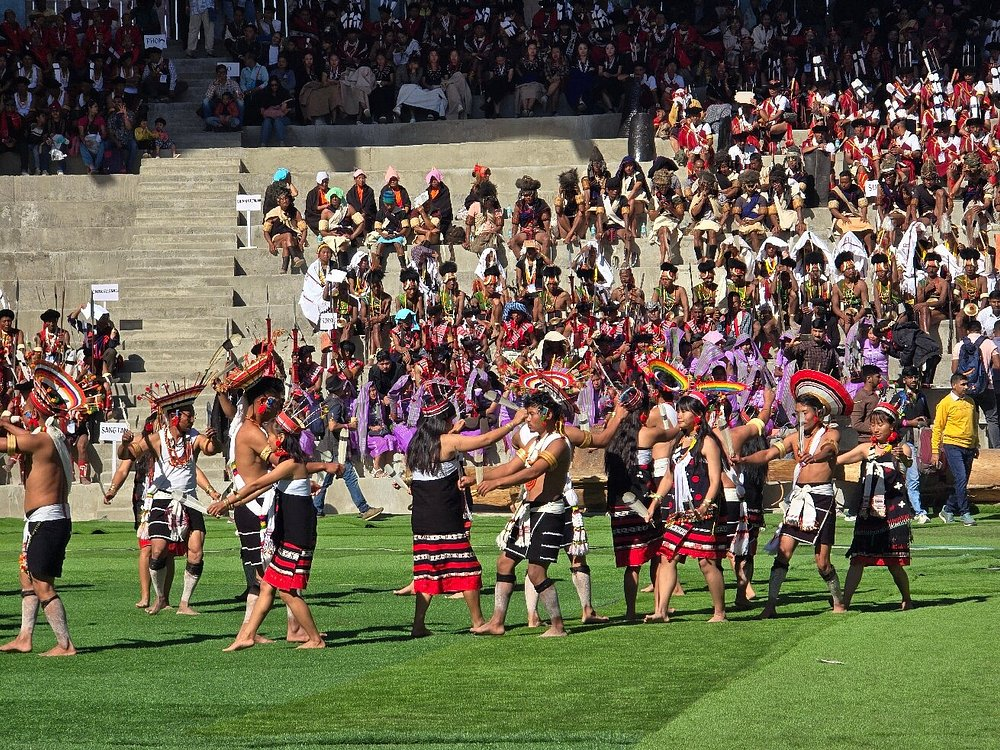
Known as the “Festival of Festivals,” Hornbill Festival showcases the rich tribal heritage of Nagaland, bringing together all 16 Naga tribes. Held in the Kisama Heritage Village, the festival features war dances, indigenous sports, folk music, and traditional Naga cuisine. This ten-day extravaganza was established in 2000 to preserve and promote Naga culture. Visitors can immerse themselves in a vibrant cultural experience, interact with local artisans, and witness the breathtaking performances that make Nagaland one of India’s most culturally distinct regions.
December 5 – Krampusnacht in Salzburg, Austria
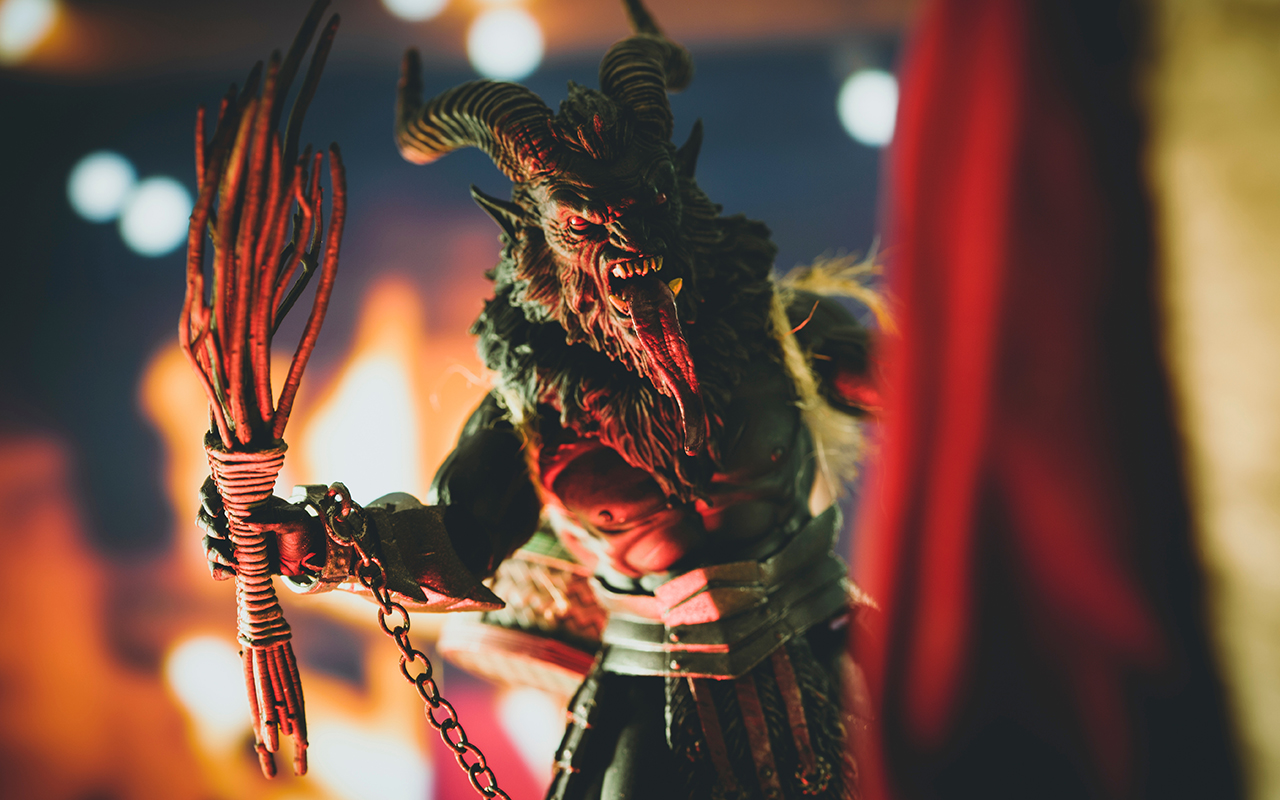
Krampusnacht is Europe’s most terrifying Christmas tradition, featuring demonic-looking creatures known as Krampus who roam the streets, rattling chains and playfully scaring onlookers. Rooted in Alpine folklore, Krampus is said to punish naughty children while Saint Nicholas rewards the good ones. The festival includes eerie parades, elaborate costumes, and performances that blend horror and holiday cheer. Visitors can experience Austria’s darker side of Christmas, enjoy festive markets, and witness one of Europe’s most unusual holiday traditions.
April 13–16 – Lao New Year (Pi Mai Lao) in Luang Prabang, Laos
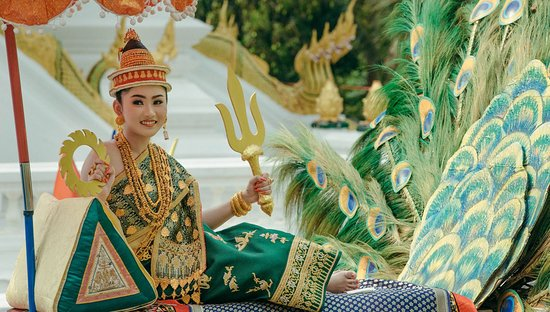
Lao New Year, or Pi Mai Lao, is one of the most joyous and vibrant celebrations in Laos, marked by water fights, temple rituals, and family gatherings. The three-day festival celebrates renewal and cleansing, with people visiting temples to offer prayers, clean statues of the Buddha, and perform traditional ceremonies. One of the most exciting parts of the festival is the water-throwing tradition, symbolizing the washing away of bad luck and misfortune. Visitors to Luang Prabang can join in the fun, experience the local culture, and witness the city’s streets filled with festive energy and colorful processions. (Date varies based on the lunar calendar)
January 5 – Harbin International Ice and Snow Sculpture Festival in Harbin, China
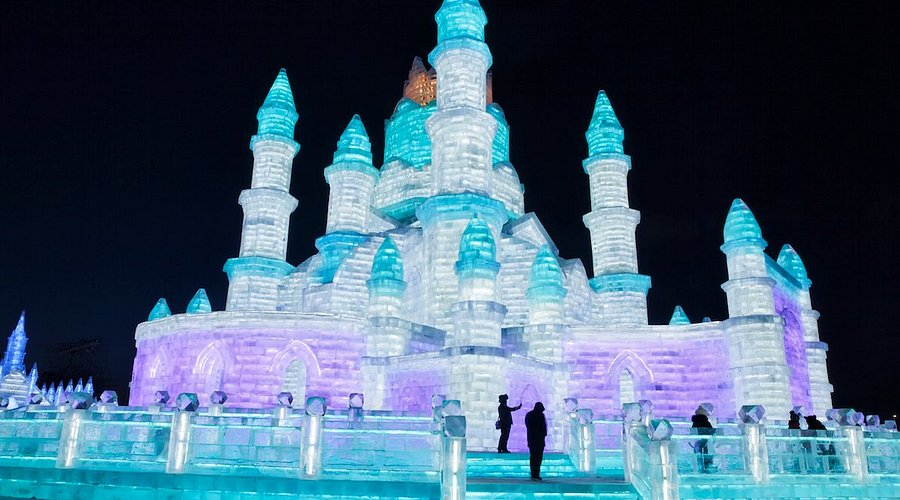
The Harbin International Ice and Snow Sculpture Festival is one of the largest and most impressive winter festivals in the world. Every January, the city of Harbin transforms into a frozen wonderland, with enormous ice and snow sculptures that are intricately carved and illuminated by colorful lights. Visitors can wander through massive ice castles, giant snow sculptures, and a frozen amusement park. (Date varies based on the annual schedule)
January 6 – Three Kings’ Day (Día de los Reyes Magos) in Mexico City, Mexico
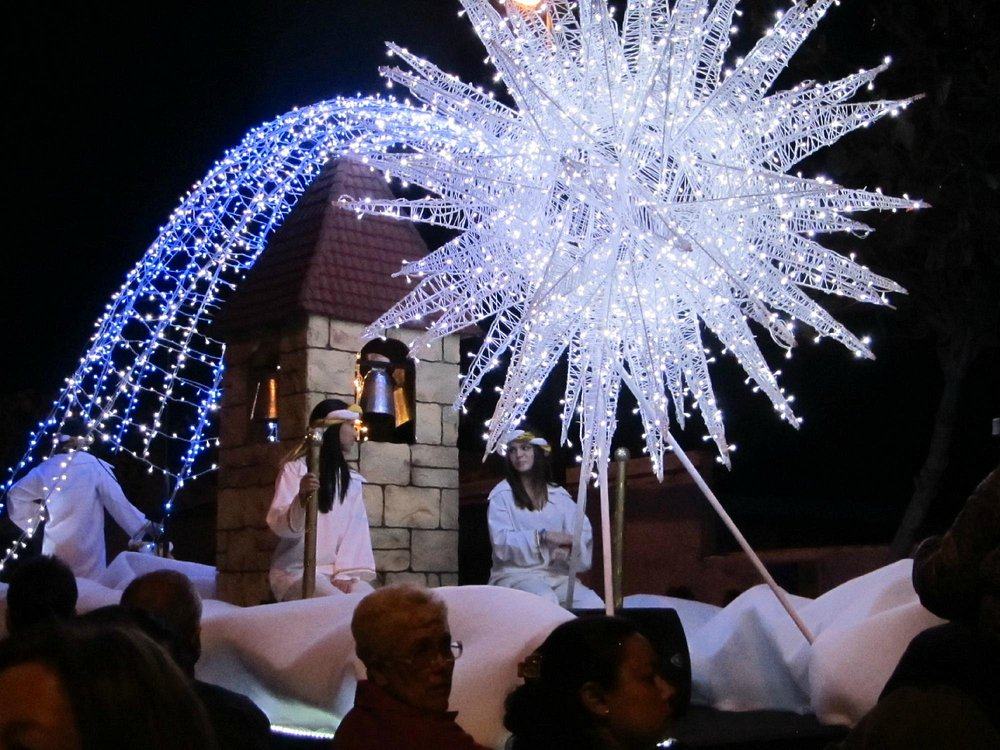
Three Kings’ Day is one of the most cherished holidays in Latin America, celebrating the arrival of the Three Wise Men who brought gifts to baby Jesus. In Mexico City, grand processions fill the streets, and families gather to enjoy “Rosca de Reyes,” a sweet bread baked with a hidden figurine of baby Jesus. The lucky finder of the figurine must host a tamale feast on Candlemas in February. Visitors can witness traditional parades, experience a rich religious tradition, and enjoy delicious Mexican holiday treats.
November 23 – Taimatsu Akashi Fire Festival in Sukagawa, Japan
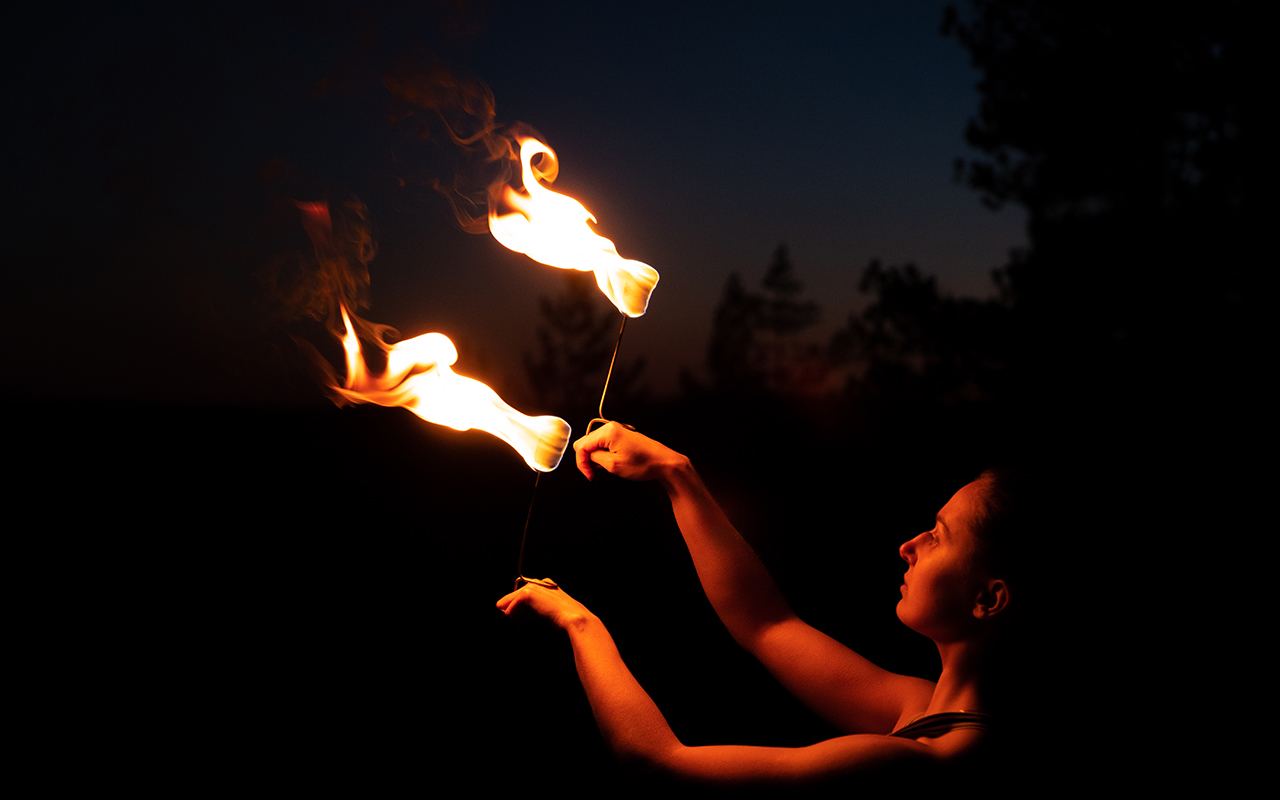
The Taimatsu Akashi Festival is a stunning fire festival dating back over 400 years, originally held to honor warriors who defended their land. Massive torches, some as tall as 10 meters, are set ablaze and paraded through the streets, creating a breathtaking river of fire. The event symbolizes strength, purification, and resilience. Visitors can experience Japan’s dramatic festival culture, witness one of the country’s most visually striking events, and learn about the rich history behind this fiery tradition. (Fourth Saturday of November, date varies annually)
January 24 – Surva International Festival of Masquerade Games in Pernik, Bulgaria
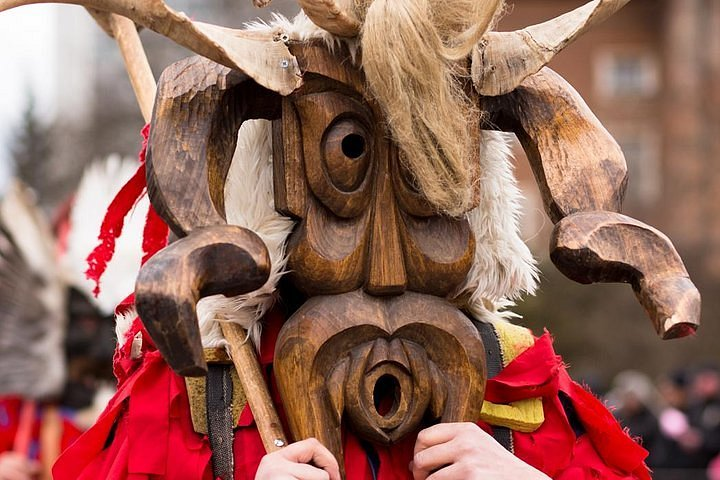
Held annually in Pernik, Bulgaria, the Surva Festival is a vibrant celebration of ancient pagan traditions. Participants, known as Kukeri, don elaborate masks and costumes to perform rituals aimed at warding off evil spirits and ensuring a bountiful harvest. The festival’s origins trace back to Thracian times, making it a living testament to Bulgaria’s rich cultural heritage. Experience a unique blend of mysticism and community spirit as the town comes alive with parades, traditional music, and dance. The intricate masks and costumes are a photographer’s dream, offering a visual feast of colors and craftsmanship.
Think you’ve seen it all? These 40 festivals prove there’s an entire world of celebrations beyond the usual tourist trail. From fiery rituals in Japan to lantern-lit skies in Thailand, every festival tells a story—one that most travelers never get to experience. So, which one caught your eye? Have you been to any of these festivals, or do you have a hidden gem we missed? Drop a comment below and share your favorite cultural festival. Let’s build the ultimate bucket list together.
For more travel tips and hacks, visit our website and explore our resources to enhance your next adventure.
